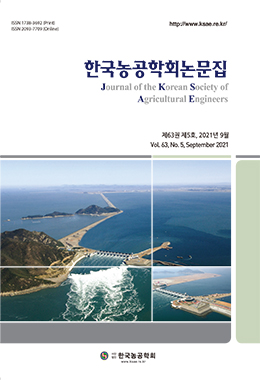The particulate matters (PM10 and PM2.5) and ammonia emitted from livestock farms as dispersed to urban and residential areas can increase the public’s concern over the health problem, social conflicts, and air quality. Understanding the atmospheric dispersion of such matters is important to prevent the problems for the regulatory purposes. In this study, AERMOD modeling was performed to predict the dispersion of livestock particulate matters and ammonia in Gwangju metropolitan city and five surrounding cities. The five cities were divided into 40 sub-zones to model the area-based emissions which varied with the number of livestock farms, species and growth stages of the animals. As a result, the concentrations of PM10, PM2.5 and ammonia resulted from livestock farms located in the surrounding cities were 2.00 μg m-3, 0.30 μg m-3 and 0.04 ppm in the southwestern part of Gwangju based on the average concentration of 1 hour. These values accounted for 0.7% of PM10 concentration, 0.5% of PM2.5 concentration, and 0.4% of the ammonia concentration in Gwangju, contributing to a small amount of air pollution compared to other sources. As preventive measures, the plantation was applied to high emission source areas to reduce particulate matters and ammonia emissions by 35% and 31%, respectively, and resulted in decrease of the area of influence by 57% for particulate matters and 59% for ammonia.




